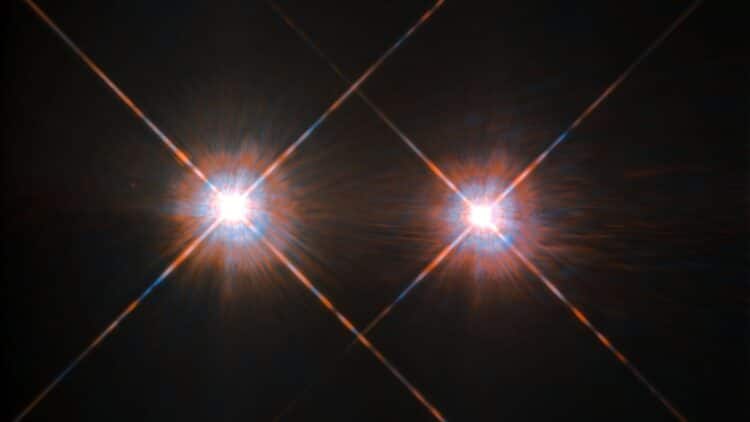Just imagine the scene: a distant, but not so distant, planet with characteristics similar to Jupiter’s, perhaps even orbiting a star very similar to our Sun. The possible discovery of a cold giant just 4 light-years away has generated a lot of excitement. That’s because it’s happening in the closest star system to our Sun. Although exoplanet research has advanced immensely in recent years, finding a planet orbiting a star so close and so similar to ours was a challenge.
Astronomers detect faint light near a blazing star: could it be a hidden planet?
The famous system where this cold giant resides is Alpha Centauri, located in the southern sky. It’s worth remembering that it consists of three stars: Alpha Centauri A, Alpha Centauri B, and Proxima Centauri. While Proxima Centauri is already famous for harboring three known planets, the other stars, particularly Alpha Centauri A, have always been attractive but difficult to study. Their high luminosity made it difficult to detect any faint objects around them.
Until, with the power of the James Webb and its infrared capabilities, scientists now have the chance to explore this star system more deeply. The use of Webb’s MIRI (Mid-Infrared Instrument) was key to revealing a faint point of light, which could be a planet orbiting Alpha Centauri A. According to Aniket Sanghi, co-author of the study:
“If confirmed, the potential planet seen in the Webb image of Alpha Centauri A would mark a new milestone for exoplanet imaging efforts. Of all the directly imaged planets, this would be the closest to its star seen so far.”
A possible gas giant orbits a nearby star — but it keeps playing hide and seek
Now, if confirmed, this planet would be a gas giant, possibly with a mass similar to that of Saturn. Although not habitable due to its gaseous nature, its proximity and similarity to the giant planets of our own solar system make it a very interesting target for study. Sanghi also adds:
“As very existence of this planet in a system of two closely separated stars would challenge our understanding of how planets form, survive, and evolve in chaotic environments.”
This could transform current understanding of planetary formation, especially in binary systems (which reminds us of when NASA spotted strange behavior in two stars). Although the initial detection was promising, the planet was not captured again in subsequent observations in February and April 2025, as Sanghi explains, “We found that in half of the possible orbits simulated, the planet moved too close to the star and wouldn’t have been visible to Webb in both February and April 2025.”
A nearby star could host a gas giant — and astronomers are ready to study it up close
If confirmed, this discovery will have enormous implications for astronomy. The planet would be the closest exoplanet to Earth ever directly observed, which could provide unprecedented data on the formation and evolution of planets in star systems similar to our own. According to Charles Beichman, study co-author and director of the NASA Exoplanet Science Institute:
“With this system being so close to us, any exoplanets found would offer our best opportunity to collect data on planetary systems other than our own.”
This opens up new possibilities for studying how planets form, survive, and evolve in dynamic systems like Alpha Centauri A. In other words, what seemed like a simple point of light could now become one of the greatest milestones in space exploration. The planet orbiting Alpha Centauri A will not only challenge our ideas about planet formation but also offer a unique opportunity to study a star system so close to home. It’s as surprising as this new world spotted beyond Pluto.


